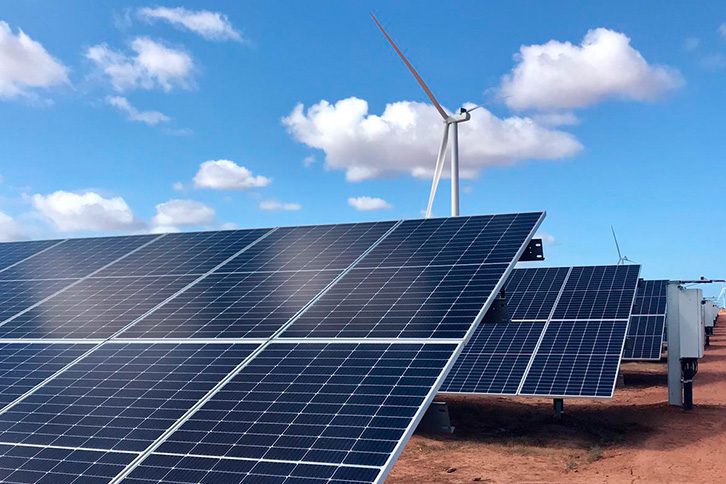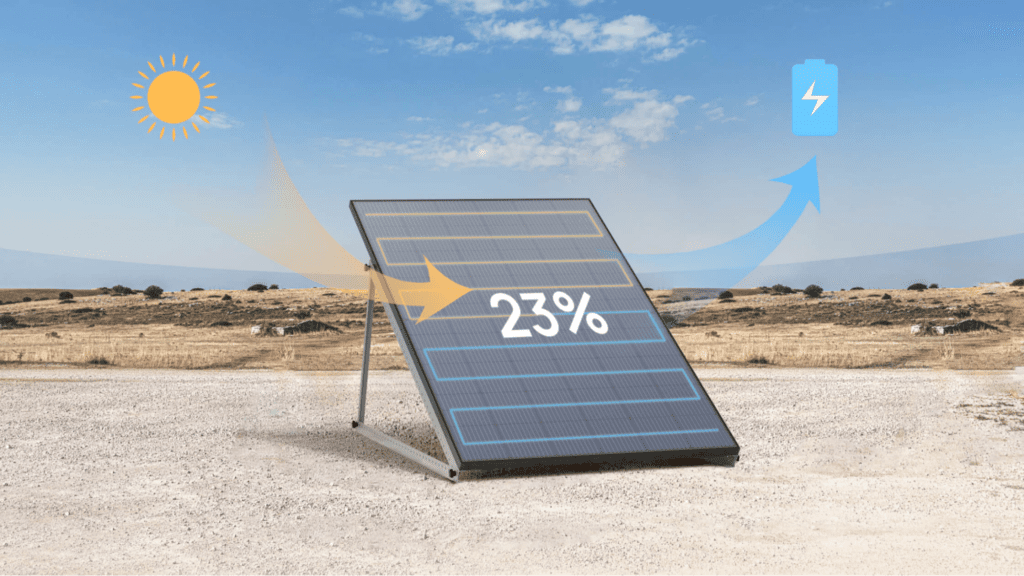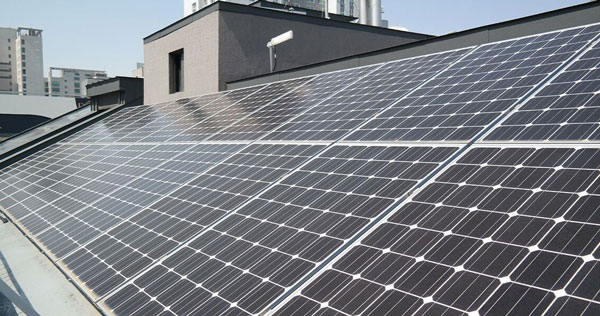Solar panel cleanliness is essential. According to a survey , dust and dirt can decrease the efficiency of sunlight capture by a solar panel by as much as 25%. Routine cleaning may help elevate productivity to a great extent. For instance, the same study found that the efficiency of solar panels that are cleaned once a month reaches 5% to 10% higher point compared to those that are cleaned annually.
Recommendations and Frequency
Solar panels should be cleaned bi-monthly using soapy water and a soft brush . Pollen and dust amounts in specific areas may require monthly cleaning. For instance, one of the dwellers of a suburban area in Southern California confirmed that after shifting his home cleaning timetable from once a quarter to once a month, the efficiency of the solar panel rose by an average of 6.3% .
Automated Cleaners
Automated cleaners are often used for larger installations. They are robot systems responsible for the consistent slipping across a solar panel surface. According to the information from solar farm installations, the average efficiency improvement while using these systems equals 15%. There is also the issue of avoiding potential damage caused by the use of inappropriate cleaning materials. Automated cleaners take this issue into consideration as they are always using the materials tested for effectiveness.
DIY vs. Professional
DIY methods work fine for routine cleaning of residential solar panels. Rinse solar panels frequently for the increased efficiency. However, for some of the larger installations, professional cleaners are utilized due to the ability to clean far more effectively and faster. For instance, data from solar panel array installations show that professional cleaning service may increase efficiency by up to 8% compared to 100% DIY methods.
Long-Term
Finally, the long-term efficiency results show that solar panels that have been cleaned according to the schedule reaching up to 95% of initial efficiency during the course of 20 years. In their turn, dirty solar panels demonstrate only 80% efficiency results after the same period of time.
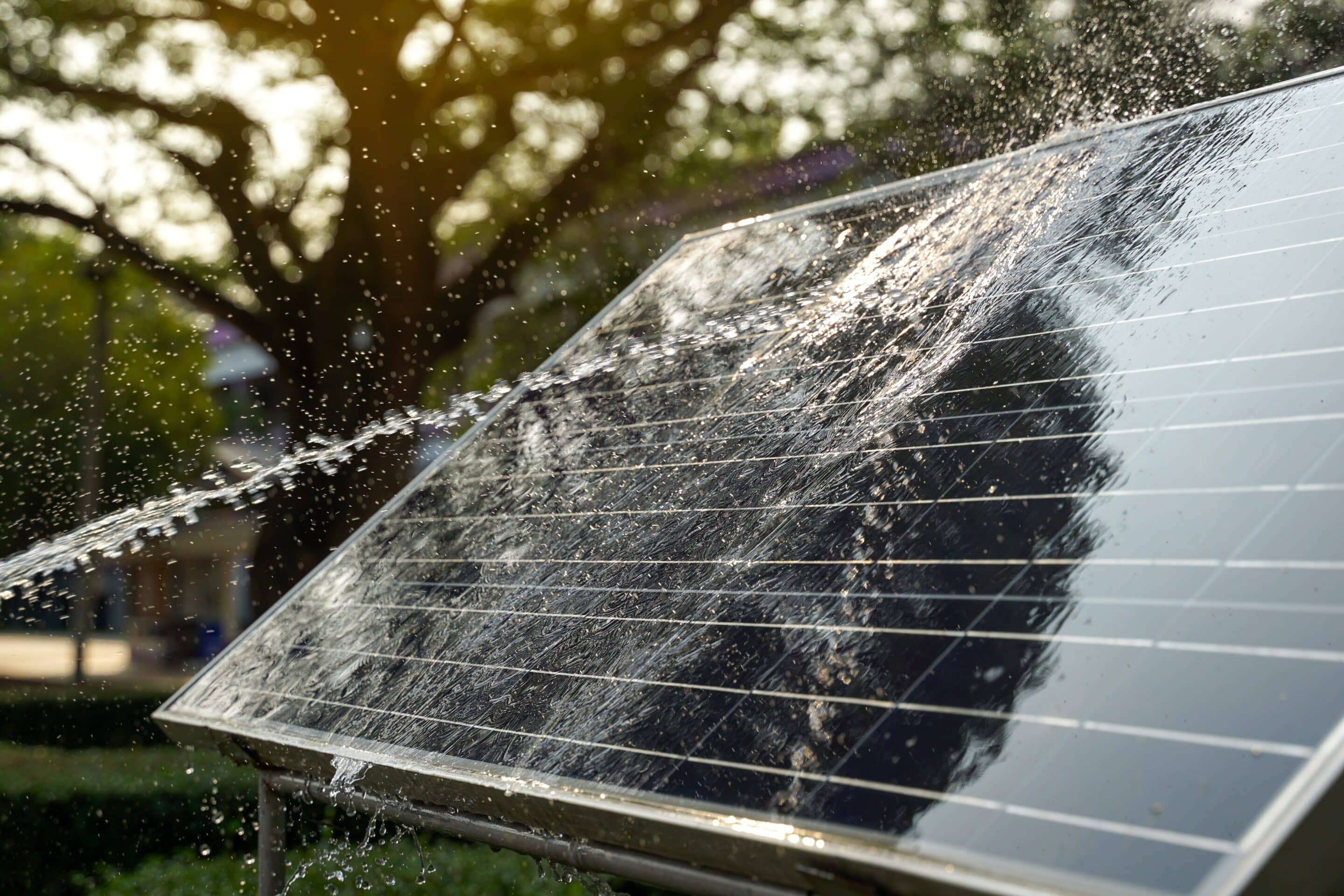
Periodic Inspections
Regular inspections can help detect and solve issues that may hinder the efficiency of solar panels once they lead to significant performance drops. Optimal results can be achieved only by regular and timely checks.
Routine Inspection Points
Key points of control are panel surface, wiring and connections, and racks and mounts. Micro-cracks in the solar cells lead to a decrease in a panel’s output by 0.5-3%. Many of these types of damage can only be seen through electroluminescence methods. On an average roof with 30 panels, up to 3 microsize damages are detected through professional inspection. In addition, faulty wiring can introduce losses up to 5% per string, and corroded connections can further reduce efficiency.
Using Thermal Imaging
Thermal imaging can also be used to detect overheating of solar cells. 5% of a particular panel’s solar farm in Arizona were identified to have heating issues, and these panels were replaced. After this measure, the facility reported an overall efficiency increase of the whole farm by 2%.
Frequency and Timing
In the case of a residential system, a bi-annual inspection will be of the highest relevance, for example, in spring and fall. Summer and beginning of spring are the time solar panels are used most intensely, so they should be in optimal condition. By detecting and repairing after-summer wear-out during fall, you save the system from more severe issues with winter onset. A study among 1,000 homes with solar panels showed that by having bi-annual inspection and maintenance, efficiency boosted by 10%.
Professional vs. Self-Inspection
While homeowners can perform simple checks by themselves, specialist services will provide more accurate diagnostics. Beyond thermal imagining self-inspections lack proper tools such as electroluminescence imaging and therefore reveal damages less in 20% of cases. Even this 20% can substantially affect the overall efficiency of the system in the long-term if we are concerning a large solar system and a highly efficient ad earning machine.
Monitoring Energy Output
Since underperformance of solar panels might lead to a significant cost of energy loss, people employing them within residential or other designed capacities should monitor regularly. The first step for this is establishing how the system is supposed to work under various naturally caused circumstances. Monitoring should thus make output calculations based on several weeks at the least. For a residential system, that amount should make 5 kWh per day, while under cloudy conditions, it should be as little as 3 kWh each day . A few tools can help homeowners and business managers watch how solar panels work. Digital monitoring is connected using Wi-Fi and can show in real time production of the energy and its level. If the difference from the normal becomes staggering, they might suspect it and then eliminate it with monitoring systems with today’s technology . The case study of a solar farm in New Jersey showed decrease of downtime by 50% as the workers were cleaning the panels timely informed of the immediate alert’s results.
Data Analysis
Another problem that can emerge is the presence of a hidden pattern. The data might seem normal, outputting from time to time usually is not extraordinary, but what if the energy production often shows underperformance? For example, some systems can have that problem during a certain period of the day, or even the year when partially disconnected from the sun. It might be that the dust that covered the panels or overgrown opposing nearby trees half the year caused that . Another school found that predictive and optimized maintenance allowed the energy output to increase by 8% by setting angles of panels and cutting those trees for maximum solar wattage performance . In this case, the data analysis shows that regular output can be deceiving and that understanding that underperformance might be a sign of inefficiency was crucial.
It can be concluded that real-time monitoring, that provides data on theoretically any amount of factors or signals if there are some automatically, increased efficiency. In Texas, while manually monitored panels lost 9% of their efficiency, in a smart monitored residential community that employed automated panel cleaning, efficiency increased by 12% during the first few days.
Updating Inverter Settings
The modulation of inverter settings is a crucial method of increasing the efficiency of solar panels. It allows better matching of output and input power, reducing the amount of energy lost to waste. The post will examine the phenomenon and steps of configuring an inverter, along with measuring its performance improvement.
Interpretation of Inverter Efficiency
Inverter efficiency influences energy output of the panels as it converts the power from DC to an FA spectrum suitable for home use . It depends on how well the inverted is configured for the system’s characteristics and output – a poorly configured inverter might have an efficiency of 85%, while a well-configured one can reach over 95%. Therefore, increasing the efficiency of an inverter depends on generally understanding its capacity and the specifications of the installed panels.
Design of Optimal Configuration
Inverters are sometimes misconfigured to accommodate various systems and input values. The first step in designing optimal performance is ensuring that the inverter is set up for the maximum voltage and current that the panel array can deliver. The second step is monitoring updates to the inverter’s firmware, since manufacturers often find shortcuts and performance positives that their devices can output . According to a study of 200 households, those who regularly updated their setting saw a 5% increase in efficiency compared to those who did not . After performing the first two steps, the third is observing the effect of performance improvements to the system. The step can be assisted by software tools provided by inverter manufacturers, which can measure the performance of the system before and after the change . A presentation for consideration includes a description of a commercial setup that saw the system’s efficiency increase due to changes in inverter settings monitoring. Additionally, while most variations can be done using the system data, narrow, specific instructions, and techniques might only be performable by an electrician. For example, a solar farm in Nevada saw a systemic efficiency increase of 6% as a result of professional optimization using system data.
Ensuring Proper Load Balance
Load balancing is the quintessential approach to minimizing the loss of efficiency in solar power systems. By ensuring that the entire system is evenly loaded, performance longevity can be maximized, and maintenance issues can be minimized.
Load balancing refers to making sure that the power demand is evenly matched across all the solar panels as well as the corresponding inverters . If a panel is strained or overloaded, it deliver less energy, and it the inverter handles 70% of the load as opposed to the inverter, the 70% inverter will degrade while the other only handles 30% .
Ways to balance load
One of the most efficient ways of load balancing is the use of smarter inverters. The smart inverters can adapt power distribution among the solar panels based on the output and the demand . In Silicon Valley, a small powerhouse saw a 5% in the system after introducing load balancing technology .
Periodic load analysis
Periodic load analysis should be conducted – it implies the analysis of the output data from each inverter or panel to make sure it performs within the given parameters. Any divergence from the standard suggests potential panel shading and the risk of inverter issues . The approach was used in a newly installed commercial solar system that had underperforming strings that were later corrected. 4% improvement was reported for the effect.
Benefits of regular adjustment
The systems spared from changes will last for no longer than 20 years. Therefore, it is vital to adjust load balance at least twice a year to make sure that longevity is increased. The process may require an initial investment, but it will lead to the significant saving of funds. The unadjusted system will last for no longer than several years, and more energy will have to be spent on replacing it as a result. At that, it is not only about efficiency, but also about the efficiency’s sustainability. Systems that have gone through bi-annual adjustments will keep 90% of the efficiency after 25 years as opposed to 80% for systems that did no adjust.
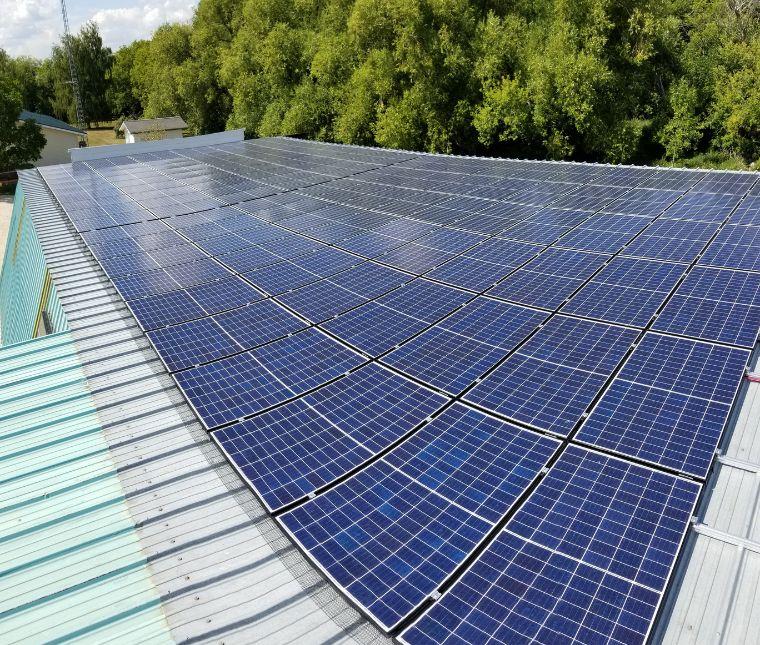
Avoiding Prolonged Disconnections
It is generally true that keeping solar panels connected as consistently as possible is essential for maximizing operational efficiency and lifespan. As such, there appears to be no particularly evident reason for solar panels to remain disconnected. Instead, such disconnections may result in unnecessary stress and damage to the panels as a result of their inefficient and sporadic use.
Effects of Disconnection
Proving the point above, the literature review demonstrates further technical reasons for the devastating effects of disconnection . It should be stressed that the disconnection amplifies the potential for frequent voltage dropouts in such cases. As such, the components of the system may deteriorate faster, such as the wires of the system’s connecting hubs, or the inverters, turning them into potential weak points in the system due to eventual disconnection. However, the most severe theoretical impact of disconnection is the reduction of work time and battery production capacity. For example, according to a real life case highlighted in the literature review, the solar panel system that was getting disconnected returned 5% less output than a constant one .
Proactive Monitoring
One of the best ways to retroactively confirm the notion that solar panels should be kept continuously connected is a proactive monitoring system. Such systems send a signal where solar panel systems get disconnected as soon as it happens, for example, in one of the real life cases, a widescale solar farm in Florida reported a 75% decrease in downtime following the introduction of the shotsmart monitor , which notifies users of the connections to the systems. Other solutions include setting up automatic reconnection systems that ensure timely reconnection and system protection. For example, a case report mentions the introduction of automatic reconnection to fail to reconnect disconnections on a solar farm in Oregon .
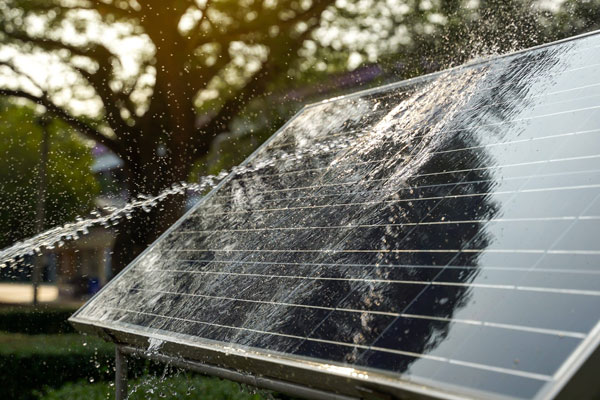
Using Quality Components
Selecting top-notch components is a critical step that determines how effective and reliable solar panel systems will be in the long term. The investment in superior-quality materials will significantly add to the overall efficiency and lifespan of the system. Moreover, the use of proper components and equipment is essential in meeting the demands of modern solar technologies.
Quality of Panels
Powered by photovoltaic cells, the main determinant of solar panels’ efficacy is the quality of the materials used. While both monocrystalline and polycrystalline cells can be efficient, and the former type reaches an efficiency of around 22%, in the best instances, the latter stops at around 17%, in the same situation . The need for focusing on high-quality materials is supported by the evidence, showing that going for the higher-grade cells will increase the annual energy production by 10%, as the same study found . The most reliable and expense-efficient mode of purchasing top-notch panels is to put trust in the manufacture and select its branded materials.
Quality of Inverter
High-quality inverters effectively convert DC electricity produced by the cells into AC energy that can be used by the customer. They boost the overall conversion’s efficiency, leading the operation for a longer period. The evidence suggests that Grade A inverters may maintain the aperture for over 10 years, guaranteeing a conversion rate of over 98%, while other models begin working with 97% and deteriorate more rapidly . It is crucial to ensure that neither the component of the inverter, nor any other piece of equipment or equipment is forced to work with a change in its nominal output. The use of an inverter of an inappropriate size will lead to the loss of up to 5% of the delivered power .

